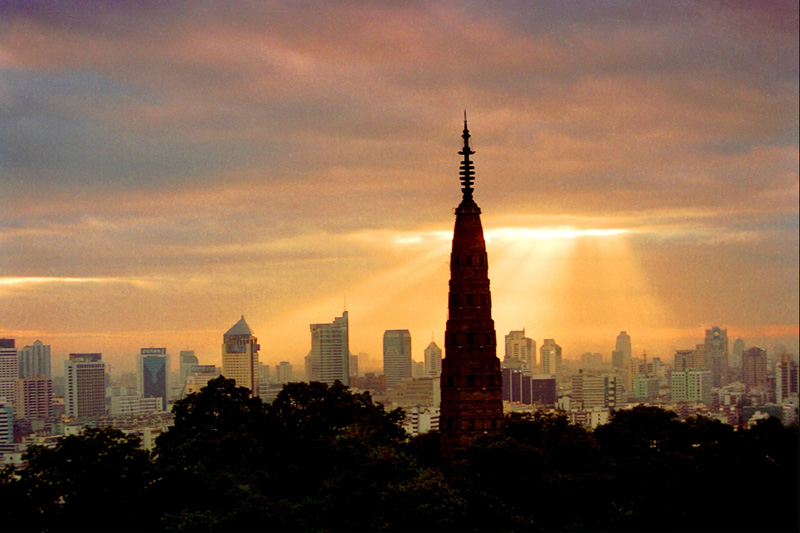Known as one of the landmark architectural structures in Hangzhou, Baochu Pagoda is a famous Buddhist building in the West Lake Scenic Area. It is located just north of the lake atop Precious Stone Hill. Originally built in 976, just like Leifeng Pagoda, its shape possesses a distinctive beauty, which was literately depicted as "a beauty just as Baochu Pagoda, while Leifeng Pagoda stands as an old monk". Its small base supports seven storeys and gives it a distinctively slender and elegant appearance.
The name Baochu, translated directly, means "protect Chu", who, legend has it, refers to Qian Chu, the last king of Wuyue. It is said that one of King Chu's ministers had the temple constructed for prayers for Qian Chu's safe return home following a trip he had taken to Kaifeng, in central China. He had previously been summoned there by the Emperor, and had been gone many months with no news of his return.
Its most recent reconstruction, in 1933, left it slightly shorter, with seven storeys, and it has most recently had its lantern replaced on its top, though its previous one is on display near the pagoda. It is constructed of brick and stone and contains no internal staircase. The tower lies next to a path that runs the length of West Lake's northern mountain range and is accessible by both dirt paths and cement stairs from nearly every side of the mountain.

